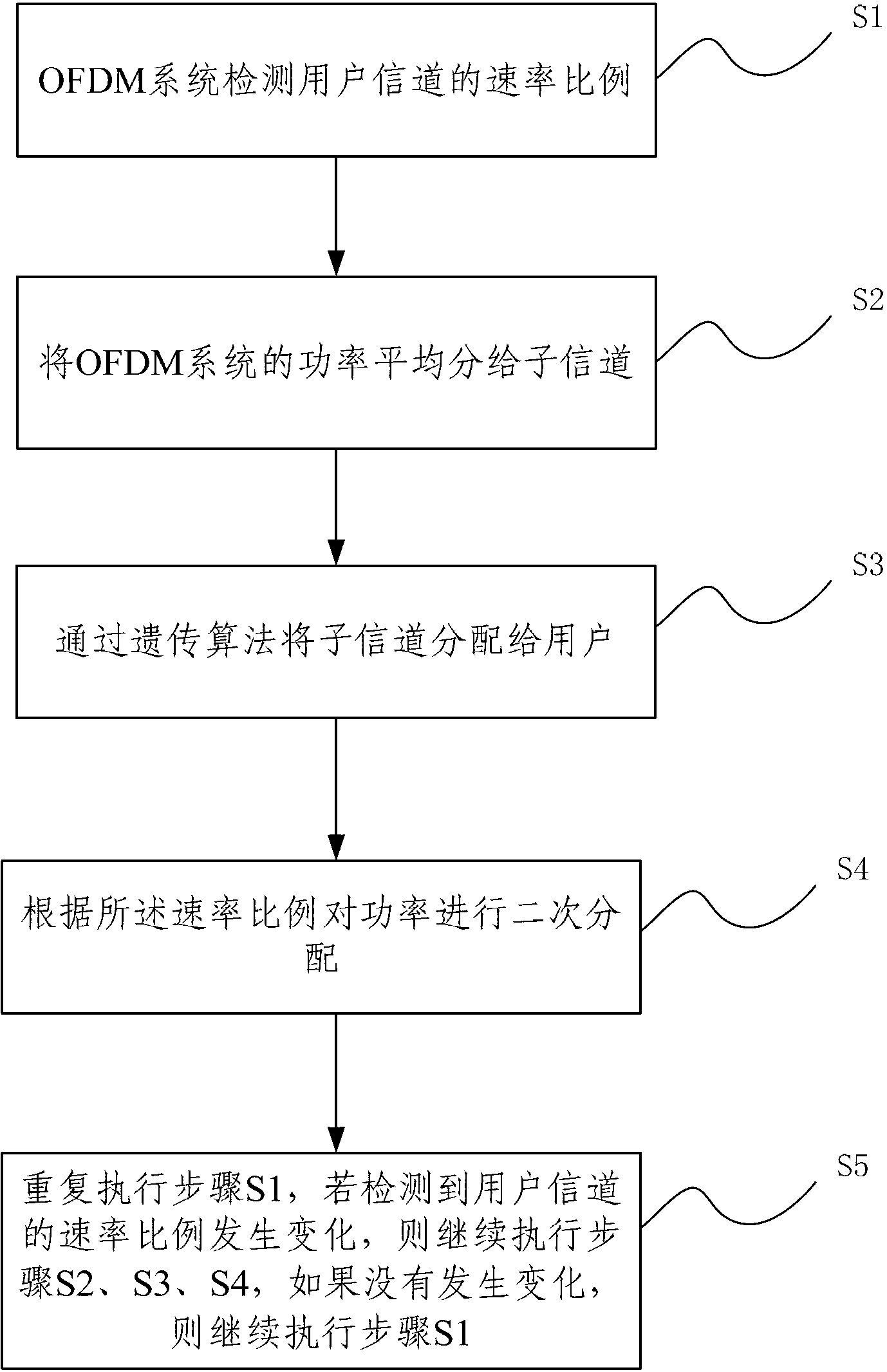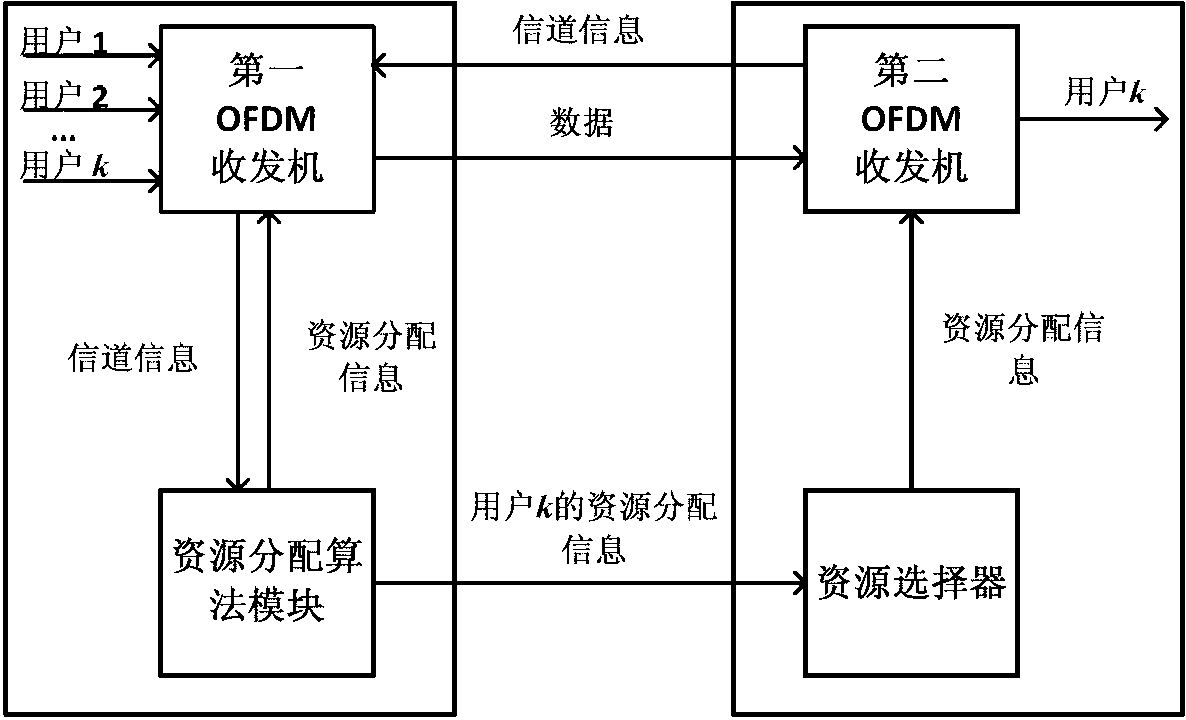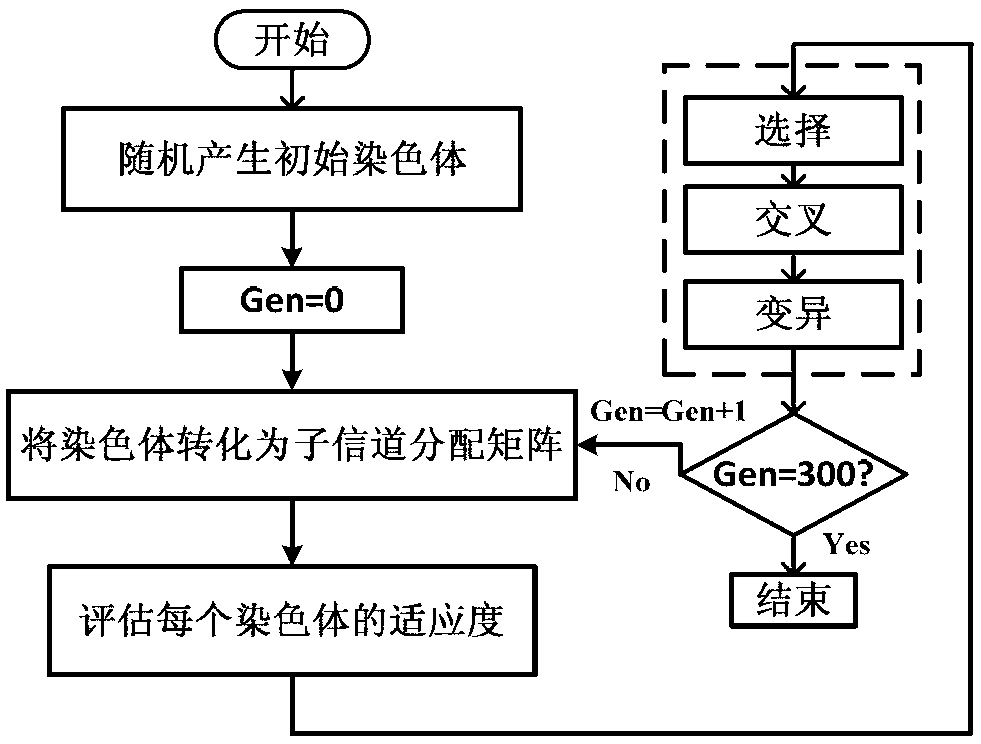Component-channel-power allocation method of multi-user orthogonal frequency division multiplexing (OFDM) system
A sub-channel, multi-user technology, applied in the field of communication, to achieve the effect of reducing the complexity of the algorithm
- Summary
- Abstract
- Description
- Claims
- Application Information
AI Technical Summary
Problems solved by technology
Method used
Image
Examples
Embodiment Construction
[0044] The specific implementation manners of the present invention will be further described in detail below in conjunction with the accompanying drawings and embodiments. The following examples are used to illustrate the present invention, but are not intended to limit the scope of the present invention.
[0045] The present invention adopts a dynamic resource allocation scheme, sets the rate ratio between users according to the service demands of different users at different times, and dynamically sets subchannel and power allocation schemes according to channel environment changes, so as to realize dynamic allocation of resources.
[0046] The present invention proposes a new method for realizing user proportion fairness and maximizing system capacity—subchannel-power allocation scheme. In the case of ensuring the lowest user rate and equal power allocation, the sub-channel allocation is performed first to maximize the capacity of the OFDM system, and then on the basis of ...
PUM
 Login to View More
Login to View More Abstract
Description
Claims
Application Information
 Login to View More
Login to View More - R&D
- Intellectual Property
- Life Sciences
- Materials
- Tech Scout
- Unparalleled Data Quality
- Higher Quality Content
- 60% Fewer Hallucinations
Browse by: Latest US Patents, China's latest patents, Technical Efficacy Thesaurus, Application Domain, Technology Topic, Popular Technical Reports.
© 2025 PatSnap. All rights reserved.Legal|Privacy policy|Modern Slavery Act Transparency Statement|Sitemap|About US| Contact US: help@patsnap.com



